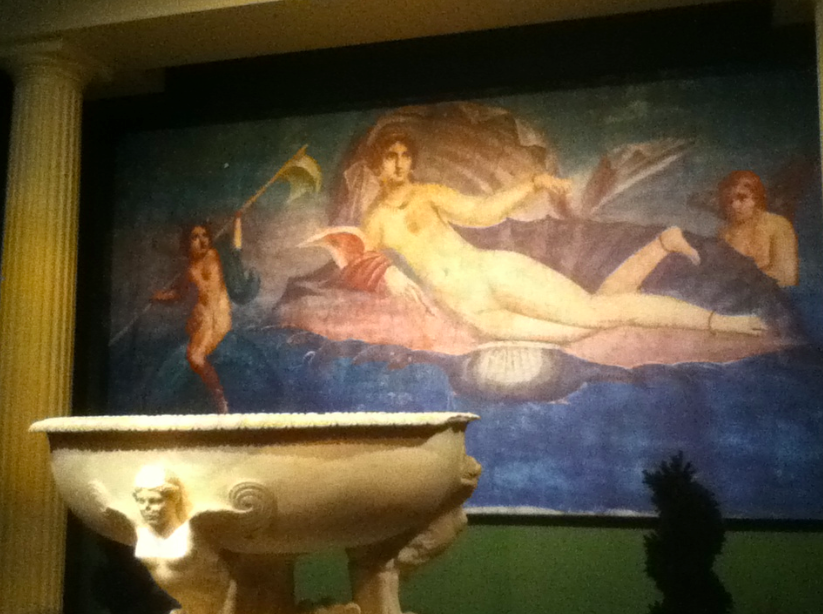Latin Students Spend “One Day in Pompeii”
In the year 79 AD the city of Pompeii was destroyed by the eruption of nearby volcano Mount Vesuvius. The Romans who inhabited Pompeii prior to the eruption believed Vesuvius to be an ordinary mountain. For a millennium, Pompeii was hidden by volcanic ash. For centuries, Archeologists have slowly been working to unearth the ancient city.
On Thursday, March 6, forty Harriton Latin students took a trip to the One Day in Pompeii exhibit at the Franklin Institute. Current Harriton Latin teacher, Magistra Cambria, and previous Latin teacher, Mr. Myers, accompanied the students to the museum. Many of Mr. Myers’ former students attended the trip and were excited to have the opportunity to see him and hear his commentary.
As the doors to the exhibit opened, the students were immediately hailed by a sculpture of Neptune, the Roman god of the sea. The figure was surrounded by frescoes and paintings of ancient myths and stories.
The rooms of the exhibit were filled with once commonplace objects from Pompeii, what are considered today precious relics of history. Ancient chair legs and bathtubs were placed in glass cases for all to awe at their historical significance and simplicity. From beautifully crafted pottery to adorned gladiator armor, the Franklin Institute’s One Day in Pompeii exhibit included artifacts from across the world that were meticulously arranged to educate the modern world.
In one of the final show rooms a short movie simulating the destruction of Pompeii was played. The movie was created using Computer-Generated Imagery (CGI). Gradually worsening in the period of a day, the city seemed to be quiet and peaceful until tremors began to shake the town. Raining fire and emitting smoke, Pompeii and its inhabitants were suffocated under volcanic ash and blazing heat. Following the eruption, an eerie silence remained in the once-thriving city.
The exhibit simulated this experience with flashing lights and a fog machine to mimic the lightening and smoke. When the movie concluded, the screen rose, revealing the last room of the exhibit.
In the room, Plaster casts of Vesuvius’ victims were placed on display tables. Next to each body was a description of how it had been excavated. In the presence of these casts, a sense of grief descended upon the students, but a tug of interest pulled them forward to read each small excerpt. Trying to fend off the falling ash, the people of Pompeii were trapped forever in these poses—many conveying the sense of terror that enveloped the city’s population.
Magistra Cambria believes the trip was a great success! She explained that field trips enable students to connect what they are learning in the classroom to the world, and serve as a way for classes to bond and strengthen their classroom communities. Although the Latin students’ visit to the Franklin Institute has come to an end, Magistra Cambria reassures that it was only the first of many trips to come!


